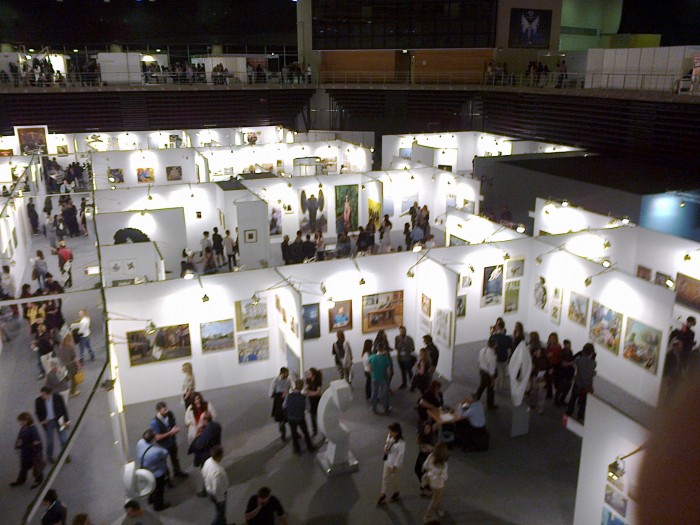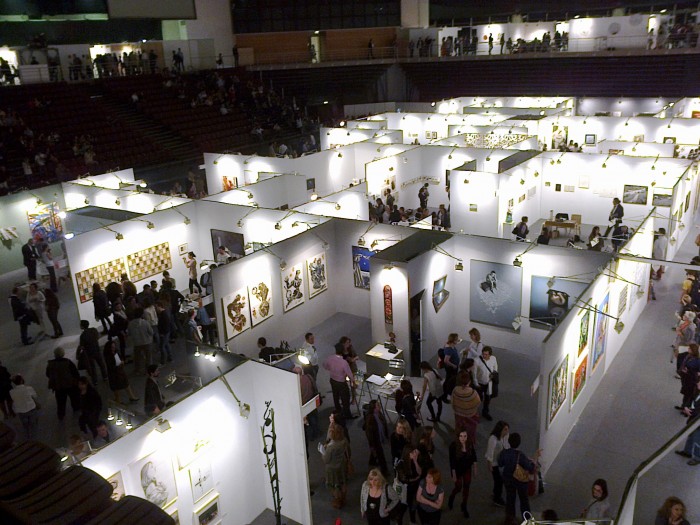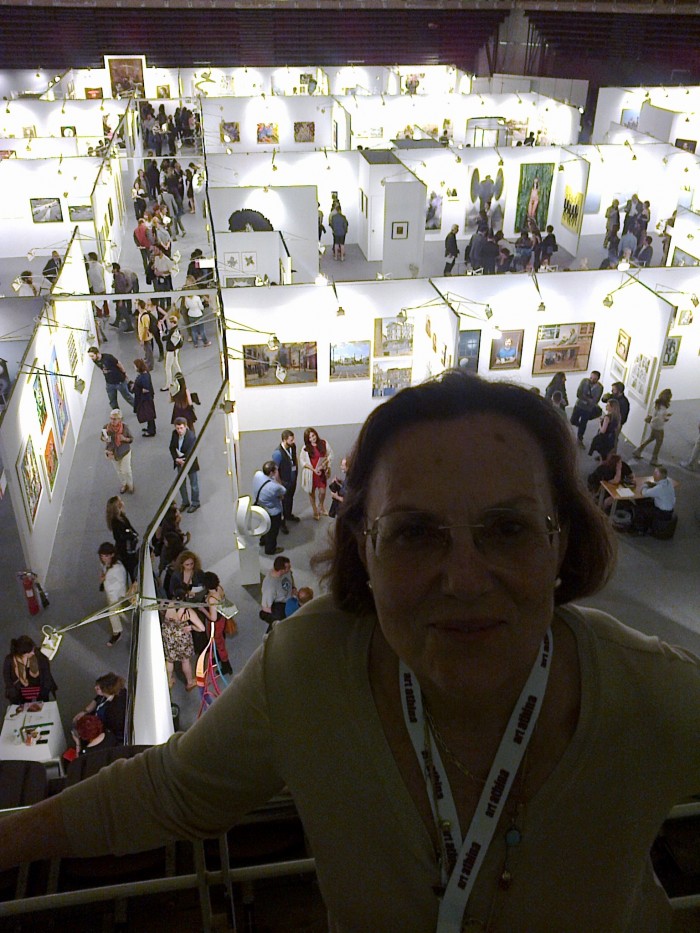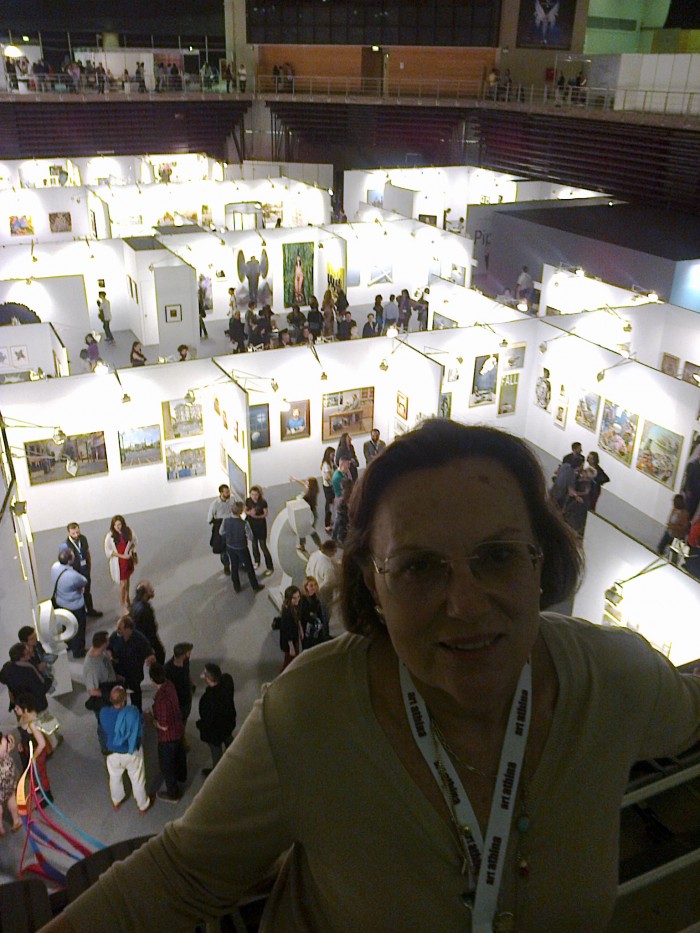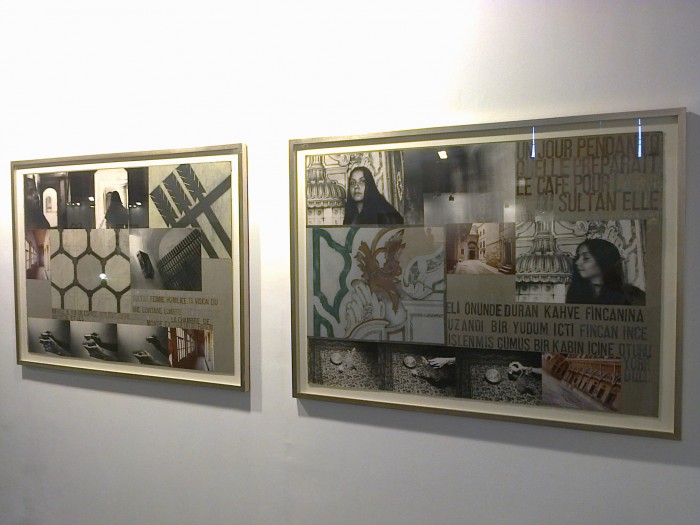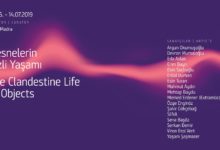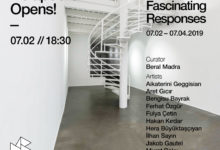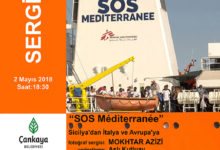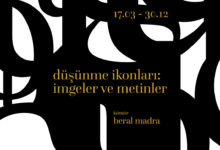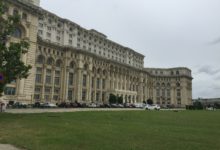COLLECTING THE IMAGES OF THE SENSIBLE
CONTEMPORARY ART WORKS FROM TURKEY’S
MR. FAZLI ÖZCAN COLLECTION, Nilbar Güreş, Canan, Necla Rüzgar
PAPKO ART COLLECTION (MR. ÖNER KOCABEYOĞLU), Ardan Özmenoğlu
MS. TANSA MERMERCİ COLLECTION Nilbar Güreş, Nil Yalter
ELGİZ COLLECTION, Sarah Lucas, Nezaket Ekici, Cindy Sherman
MS. FÜSUN ECZACIBAŞI COLLECTION Leyla Gediz
MR. OLGAÇ ARTAM COLLECTION Julian
ARTATHINA, 15-18 MAY, 2014
Co-CURATORS: BERAL MADRA AND SALİHA
ArtAthina opens it gates to the contemporary art productions in the Balkan’s, South Caucasus, Middle East and the South Mediterranean
The task of writing a conceptual guideline, a preliminary program and a final program for the ArtAthina which intends to open a vista to the Balkan’s, Russia, South Caucasus, Middle East and the South Mediterranean requires an overall evaluation of the the current status of the culture industry in this
The cultural policies and infrastructure of the aforementioned regions should widely discuss and elaborate on the question such as “how to strategize cultural production”, “how to intervene into the public education through exploration of relevant cultural material” and “how to take a position within the globalization of the culture
Contemporary research shows that in the aforementioned region the current theorizations of the culture industries have Modernist-Post-modernist configurations. Official and private organizational substances of contemporary infrastructures are still on a developing level in comparison to the solid system of the initiative EU
However, we cannot ignore that at the same time there is a considerable growth and change in contemporary culture and art production since 1990’s. Due to the neo-liberal economic developments industrial productivity of cultural goods and services, consumption of the cultural production, the employment of artists, and growth of the work force in arts-related industries expand
Another contribution to this expansion is the arts in trans-disciplinary forms and aesthetics that have become a major part in global economy, due to the related development of world communication, computer and electronic technology systems. The distribution of electronic images and sounds provide a worldwide audience and the development of an image and sound technology which is applicable to practically every industry has become an arts-related products. Consequently, all nations are re-adjusting or will re-forming their culture industries and policies according to the requirements of this global market that determines the ownership or dissemination of these
The potential for the art market of this century is rapidly developing not only with the ever-growing market value of the so-called “modern and post-modern masterpieces”, but also through the continuous movement of artists and art goods, through electronic media and networking.
Today, arts and culture products determine the success in the global economic competition and necessitate communication and information exchange that can exploit the boundaries between the economical and political polarities of the world. Painting, sculpture, photography, films, books, records, documentaries, design and computer generated images and sounds, are all major players in international markets.
In summary, the arts represent a very important part of the global economy. However, in the aforementioned region this is not yet an achievement that can gratify a real transformation, despite some remarkable developments in re-forming the state controlled cultural infrastructures and establishing private ones, in promoting arts and culture towards an international recognition and in investing into the creative individual.
ArtAthina is intending to contribute to the developing art market of the aforementioned territories with its experienced management team and with its reputable position within the art markets of
ArtAthina’s main objectives and convictions are as
-By all means all nations in the aforementioned territory are re-adjusting or will re-forming their culture industries and policies according to the requirements of the global market that determines the ownership or dissemination of these
– It is well acknowledged that today, arts and culture products determine the success in the global economic competition and necessitate communication and information exchange that can exploit the boundaries between the economical and political polarities of the world.
-Contemporary art has a very positive effect on the quality of life for the individual and the community in which he or she resides. The visual arts embody the aesthetic welfare of the community. The visual arts create an ambiance, which enhances our lives and provides opportunity for a lifelong enjoyment in creative activities.
-Art becomes the cultural repository for the population’s artistic accomplishments, which develops a sense of ownership and pride in the community or nation. In addition, art provides a bridge and a language for bringing cultures together. The visual arts have a way of transcending cultures. Nations have used the arts for centuries as a means of cultural exchange and international understanding because they are easily comprehended and appreciated, even by peoples who may have opposing values or political systems. Consequently the arts play an important role as a common ground bridge to a tranquil and productive multi-cultural community.
-By mapping the conflicting paths, different needs and functions, and defining roles of local and regional traditions and identities within the origins and meaning of Non-western modernism, the richness and complexity of global modernism or post-modernism might be cultivated and rejuvenated. In this respect visual art, with its wide and open margins is the new name of the aesthetic, artistic and processing phenomenon that will open a platform of reciprocity between the cultural manifestations of the West and the Non-
With these objectives and convictions ArtAthina hopes to achieve a new communication and exchange platform and a possibility of presenting the contemporary art production of the aforementioned territories to international collectors, dealers and galleries. In consideration of this goal we are realizing a group show from Turkey with artworks from the collections of distinguished collectors and participating
This exhibition entitled COLLECTING THE IMAGE OF THE SENSIBLE, Contemporary Art Works from Turkey’s Collectors intends to show not only the collector’s scene in Turkey, but also the intersection or concurrence of two gazes, namely the one of the artist and the other of the collector. Even if we consider that the gaze of the artist determines the gaze of the collector as what we see on the surfaces of the artworks have been conceived and realized by the artist, the concurrence of perception, reflection and discrimination are notable. What unites the artist and the collector is in fact the fascination, temptation and the multi-layered content of the “image of the sensible”, which in this exhibition focuses on the “identity and image of women” as interpreted in the artworks of two generations since 1990’
To emphasize the intention of the selection of the works from the distinguished collectors, the viewer is
– to find a common sagacity and sensibility in the distinction and selection of artworks, which in this case appeared as a focus on the female identity and image;
– to recognise the conceptual and aesthetical orientations in the last twenty years, which in this case are signified with images that refere to socio-political and cultural realities in the artist’s;
– to trace the desired power of the images, which encompass manifestations the artist and the way of the beholder looking to the world through these images;
– to acknowledge the images as a tool for the viewers visual desires or represesentational opinions as well as the initial yearning to
These Images of the Sensible is a challenge for the spectator to journey into the mind, the spirit and consciousness of the individual-as artist and as collector- in Turkey.
Beral Madra & Saliha Yavuz, March 2014
*****************************************************************************************************************
INTERVIEW WITH BERAL MADRA
BY Lina Stefanou, JULY 2014
Editorial Director | Editorial Advisor
N O M A S
A Biannual Collectible Edition
www.nomasmagazine.com
lina@nomasmagazine.com
You’ve been working in art since 1984. What has changed in the art scene of Turkey in those thirty years?
First of all since 30 years every decade we have witnessed the sociopolitical, ethical, social and ideological transformations of three generations of artists corresponding to the political, economic and cultural affairs. Briefly said this transformation has been to the direction of more opposition, more dissidency and reckless criticism of the prevailing status quo which was a very overwhelming process of so called democratisation. So that the contemporary art or visual art production which is always external to the official cultural policy has been the most free area for critical expression. However, later at the end of 90’s when this production became the object of interest of the private sector, it has somehow lost its aura of genuine dissidency and gained a hybrid content and aesthetics consisting of oppositional declarations, post-media images, re-cyled art historical examples and technological skills. Throughout these years galleries have been the fundamental infrastructure for production and marketing. Auction companies which entered into the contemporary scene since 10 years and art fairs whih could not achive international fame are extremely hybrid bodies that harm the quality of the production, artists careers as well as the collectors value. The other pillar of contemporary art production were the artist initiatives which lived their highlight in the 90’s, but lost their enthusiasm since a couple of years due to the lack of public money and hegemony of corporate art.
How difficult was it, for a woman in the 80s, to succeed as an art curator and critic in the difficult field of art? How did you manage it?
Turkey is a patriarchal country and feminist movements could not achive a significant victory over this most of the time very fundamental and violent male presence. In the culture and art scene women have gained the upper hand since the 80’s and with some other collegues I was one of the pioneers. I could go through this male jungle without being deadly injured because of the support of my husband, who is a Fluxus artist (Teoman Madra), and I am strongminded and people say samoetimes really agressive! Yet since a decade, because of my age, I am more sensible! We owe the current scene of women hegemony to women artists who are active since the 80’s with their dissident courageous works and have achieved international recognition. I have been realizing several exhibitions with women artists since a decade. My position in the art scene is mainly reflected through the socio-political concepts of my exhibitions as well as in my articles, reviews, catalogue texts. I think I am respected because of my sustainable poisition.
How are things in this field today?
In this field there is no problem wether you are male or female; the problem is how to survive without the public money support, without sponsors and without collectors.
How educated is the average Turk audience in modern and postmodern art?
The average public (please don’t mention Turk audience, because there is also Kurd audience and many other ethnic identities in Turkey) is not well educated in Modern and Post-modern art, because of the lack of public education infrastructures in contemporary art productions. Turkey is over 70 million and contemporary art is confined to İstanbul, Ankara, İzmir and some cities where universities have art faculties.
What do you think is the place of Istanbul in the industry of art?
Art industries in İstanbul consist of private sector art centers, museums, galleries, art fairs; municipality culture centers and state orchestra, theater, opera. All of these entities have different policies, goals and programs. I regret to say that this is a very fragmented and unsubstantial culture industry.
In your opinion, are artists in Turkey paid according to their artistic value?
No, not to their artistic value, but according to the dictums of the sporadic international art values and to the local appreciation of galleries and collectors.
This year you participated in Art Athina with a selection of art works curated by you and Saliha Yavuz, which belonged to private Turk art collectors. Some of these works made an impression not only for their style, but also because they were daring and provocative. How free are the Turk artists in relation to the state?
Visual arts is a free creative zone; it has been so since the 80’s. Except when a work is exhibited in a public space and some people find it offensive towards religion or national pride and protest. Evidently the existing private sector museums are quite sensitive on these issues and they try to avoid exhibiting works that might arouse protest and eventualy a censorship scandal.
Is there state censorship?
Censorship has also changed its status; you know that PM’s and their entourage are owners of press and media. The verbal and visual language of the press and media can manipulate all kinds of realities. The public nowadays should learn how to decipher this language. Modern art in Turkey was an official program; the painters have followed the so clled dictums of official culture policy; later in late Modernism and in Post-modernism the control of the state on art considerably declined and the visual production became more independent and dissident. State censorship in Turkey ruled on literature and cinema until late 80’s. However, we should mention the clandestine censorship of private money, which does not like rebellious art images. If artists and art experts apply to public money their projects are being examined by burocrats who have a secret censoreship code and if it does not fit into this code, the project is rejected.
Have these works been on exhibition in Istanbul, yet?
Yes, all these works have been exhibited in various exhibitions in public space or gallery space.
The potential of the art market of this century is expanding very fast, not only due to the constantly increasing value of the so-called “modern and post-modern masterpieces” but also due to the high mobility of creators and artworks through electronic media and networks. Who form the tendencies and trends in art; gallerists, curators or critics? And how does that affect the quality of artwork that eventually reaches the audiences?

